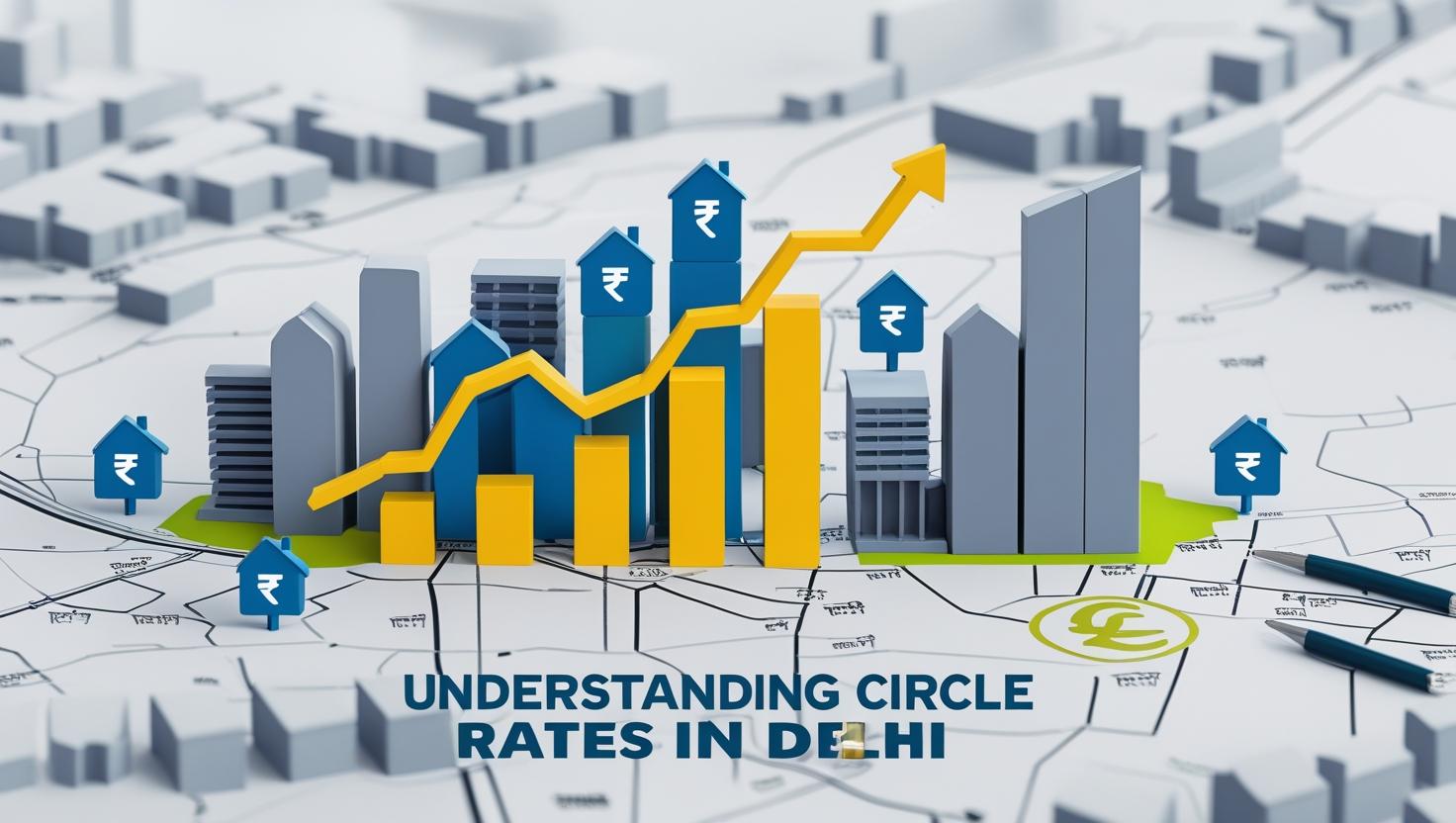Understanding circle rates in delhi is crucial for anyone involved in property transactions in Delhi. These government-notified rates serve as the minimum valuation benchmarks for property registration, directly influencing stamp duty and registration charges. In 2025, significant updates to these rates have impacted property valuations across various localities in the capital.
What Are Circle Rates?
Circle rates, also known as guideline values, are the minimum prices set by the government for property transactions in a specific area. They are used to calculate the stamp duty and registration fees during the transfer of property. While the actual transaction value can be higher than the circle rate, it cannot be lower. This system aims to curb the undervaluation of properties and ensure transparency in real estate transactions.
Recent Revisions in Delhi’s Circle Rates
As of March 2025, the Delhi government has implemented revisions to the circle rates to align them more closely with current market values. These adjustments vary across different zones and property types, reflecting the city’s diverse real estate landscape.
Factors Influencing Circle Rates
Several factors contribute to the determination of circle rates in Delhi:
- Location: Properties in prime areas with robust infrastructure and amenities typically have higher circle rates.
- Property Type: Residential, commercial, and industrial properties are assessed differently, with commercial properties often attracting higher rates.
- Property Use: The intended use of the property, such as self-occupation or rental purposes, can influence the applicable circle rate.
- Amenities and Infrastructure: Proximity to facilities like schools, hospitals, and transportation hubs can lead to higher circle rates.
Impact on Property Transactions
The revision of circle rates has several implications for property buyers and sellers in Delhi:
- Increased Transaction Costs: Higher circle rates result in elevated stamp duty and registration fees, increasing the overall cost of property transactions.
- Market Value Alignment: Adjustments aim to reduce discrepancies between declared transaction values and actual market prices, promoting transparency.
- Tax Implications: Accurate circle rates help in minimizing tax evasion by ensuring that property values are not underreported.
Navigating Property Valuation in Delhi
For accurate property valuation in light of the updated circle rates, consider the following steps:
- Consult Official Notifications: Regularly check updates from the Delhi government’s revenue department for the latest circle rates.
- Engage Professional Valuers: Hiring certified property valuers can provide precise assessments that consider both circle rates and current market conditions.
- Utilize Online Tools: Several online platforms offer calculators to estimate property values based on updated circle rates.
Source : delhi.gov.in
Conclusion
Staying informed about circle rates is essential for anyone involved in Delhi’s real estate market. These rates not only affect transaction costs but also play a significant role in ensuring fair and transparent property dealings. By understanding and considering the updated circle rates, buyers and sellers can make more informed decisions and contribute to a more transparent real estate ecosystem in Delhi.


